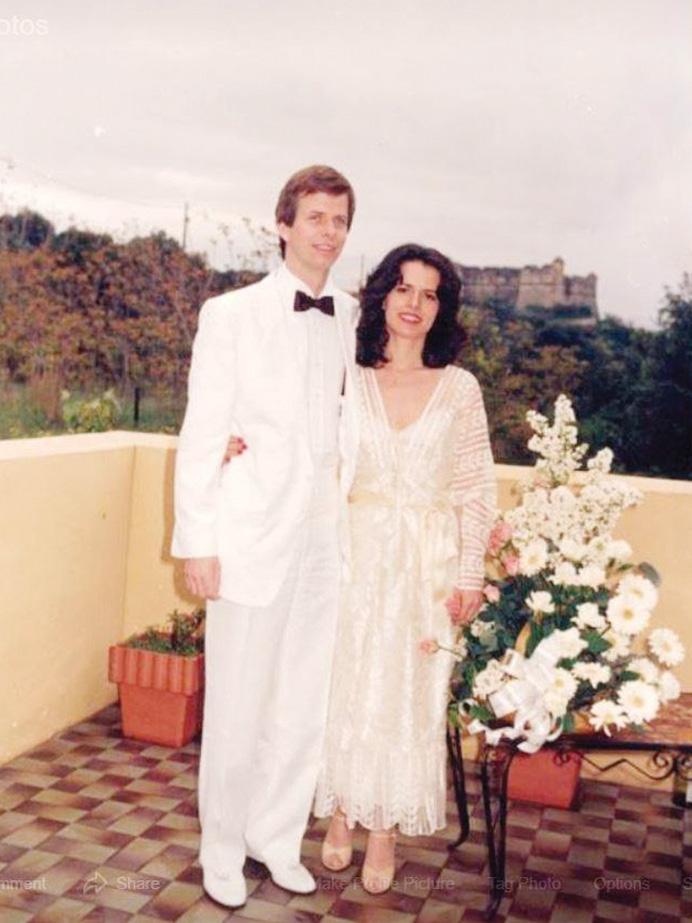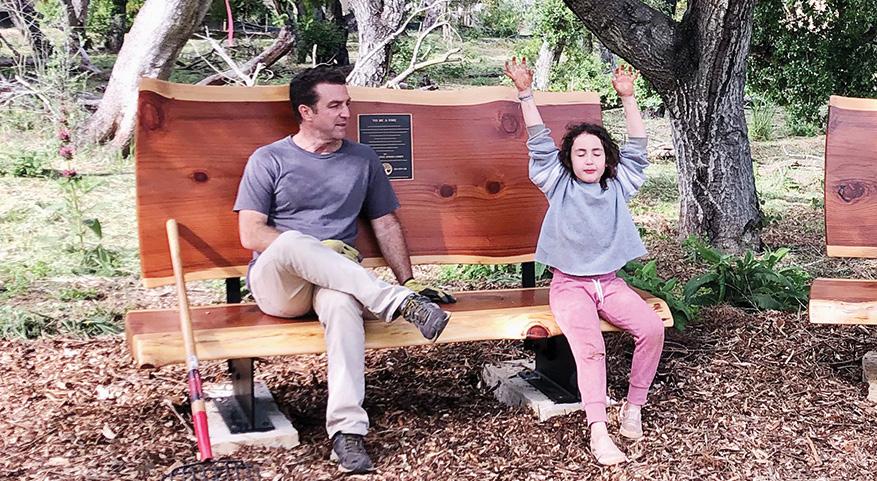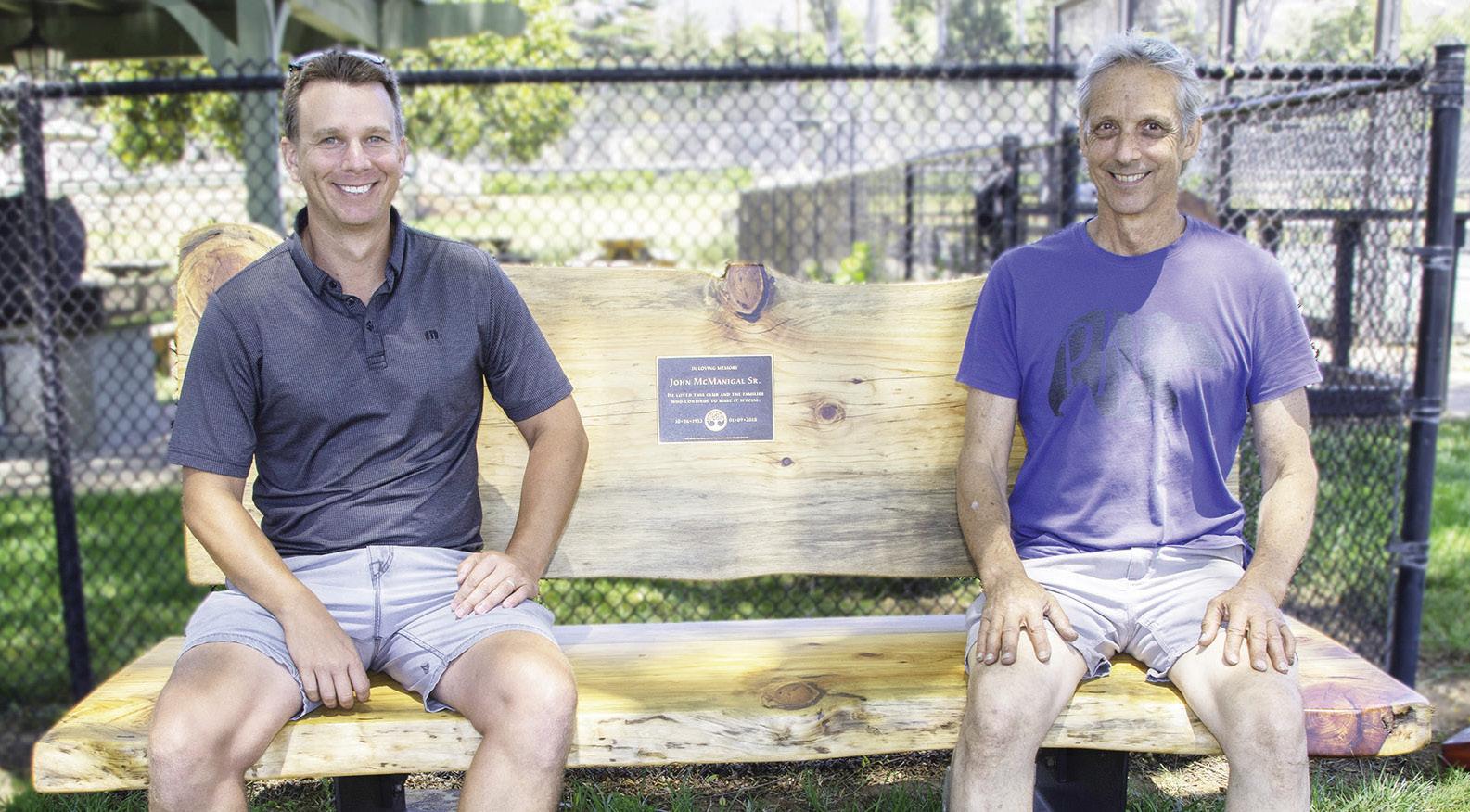
11 minute read
In Passing
Michael Doane, the Man of a Million Stories
Anyone who knew Michael Doane knew that he was a man of a million stories. He was a prolific talker who could bend your ear for hours about politics, literature, sports, business, the weather – the topic rarely mattered. At dinner he would hold forth tirelessly and Mom would kick him under the table begging him to stop. We all giggled but he was never deterred. Dad loved conversation the way car nuts are obsessed with cars.
There were the weeks he spent with the Lakota Sioux researching his book Bullet Heart and the tales he learned from tribal leaders in a sweat lodge. There was that time in Yankton when the jealous ex-boyfriend of a girl he was dating tried to shoot him during a frenzied pursuit across the university campus. Dad had befriended the football jocks by writing their college term papers. He found refuge in the linebacker’s dorm room.
They were colorful tales of a complete and memorable life. He traveled the world, led an accomplished career in IT and he published five novels and five business books. Dad died on Friday at his home in Angers, France after a long battle with bladder and prostate cancer. He was 67.

writer, after all. But when it came to his favorite story – the Hong Kong with Bob Friend, Graham Davis, Neil Walker and Chris Foulkes. night he met Mom – he didn’t need to embellish. My favorite stories were about the late-night adventures in the karaoke bar Osama and that time Dad convinced the proprietor that Bob Friend was the actor Tom Selleck. Dad always sang Dean Martin’s rendition of “Everybody Loves Somebody.”
Richard Michael Doane was born on August 3, 1952 in Sioux Falls, South At different times, Dad ran in the same literary circles as the authors T. C. Dakota, to Richard and Margaret Doane. His father was a marketing executive Boyle, Pete Dexter and, one his idols, Jim Harrison. In Santa Barbara, he played with the meat processing company John Morrell. The family moved around – in a weekly basketball game that rotated a lot of Hollywood types and retired to West Covina, to Ottumwa, Iowa, and then back to Sioux Falls, where Dad well to dos. Memorable friends included Dean Moray, the screenwriter Paul attended O’Gorman High School. He briefly attended the seminary, hoping to Brickman and Chris Carter, the TV producer and creator of The X-Files. Dad was one day become a Catholic priest. He was kicked out, he claimed, for studying such an iconic smoker he claimed he had been the inspiration for that show’s Latin in the bathroom after curfew. Later on, he set out to become a writer like character, “The Smoking Man.” Friends in Santa Barbara will remember him his literary heroes Bernard Malamud and Jack Kerouac. He studied English as “The Smoking Gardener,” a nickname he earned for the beautiful garden he literature at the University of South Dakota. cultivated and the constant cigarette that dangled from his mouth.
In 1979, he sold his car and used the money to fly to Paris. It was meant to be a Dad spent the latter half of his career as a consultant and analyst in enterprise two-week vacation. It became a permanent stay. Shortly after arriving to France, software, first in Sioux Falls and then in Peachtree City, Georgia. He became he finished writing his first book and he sent the manuscript to publishers in an expert on SAP and wrote four books on the subject. In 2017, he semi-retired New York. He collected the rejection letters and hung them on the walls of his briefly in Cape Town before he got sick. apartment until every publisher had turned him down. He wrote a second book Dad was a man of deep humanity for whom the human condition was a and repeated the process. Eventually, Knopf agreed to publish his third novel. lifelong preoccupation. He preferred daily acts of kindness over grand gestures That book, The Legends of Jesse Dark, launched his writing career and a successful of generosity. He lived by William Blake’s words: “He who would do good to collaboration with Gary Fisketjon, the powerhouse editor who also discovered another must do it in Minute Particulars.” He gave money to total strangers as Tobias Wolff, Donna Tartt, and Haruki Murakami. indiscriminately as he would to friends and family.
Dad’s storytelling was prone to literary license. He was a writer, after all. But Dad was the kind of guy who enjoyed humble fare as much he delighted when it came to his favorite story – the night he met Mom – he didn’t need to in the high life. He was as content with Sloppy Joes as he was with sifter of embellish. The story was incredible because it was true. They met at a Paris cognac. He could recite passages from Shakespeare as easily as he could recall dinner party in January 1981. He spoke little French, she barely any English. how many home runs Hank Aaron hit in 1966 (44). He liked the feel of a good It was love at first sight. He proposed after three days and they were married suit but he was most himself in a Hawaiian shirt, jeans and loafers. He desired three months later. Their marriage lasted until the day he died. few material possessions than a reliable computer, good books and good wine
In 1991, Dad moved the family from France to Santa Fe, New Mexico. We and whiskey. He drove the same pickup truck for almost twenty years. Every lived on a seven-acre spread with cacti and coyotes. Dad wore cowboy boots, Christmas he asked for the same thing: “Peace on Earth.” tended a vegetable garden, and he finished his fourth book, City of Light. In his final days, the man of a million stories uttered few words. We savored
Dad mixed with such a varied and fascinating crowd that everyone seemed every one like they were the waning hours of summer. like a character from one of his novels. There was his high school sweetheart He is survived by his wife, Claudine Doane; a son, Guillaume Doane; a Kim Kelly, the football star Jim Hargens and the enduring pals Bradley Aldern, daughter, Sarah Sheldon; a sister, Catherine Simpson; a brother, Robert Doane; Craig Volk and Danny Donahoe. There were business escapades in Tokyo and a brother-in-law, Hervé Ripoche; and two grandchildren, Attila and Elodie. •MJ 32 MONTECITO JOURNAL “Diversity is not about how we differ. Diversity is about embracing one another’s uniqueness.” – Ola Joseph 2 – 9 July 2020
ON THE RECORD (Continued from page 15) come in,” she said. Thanks to the loosening of social-distancing measures that coincided with the Memorial Day Holiday, many patients are presenting themselves with serious flu-like symptoms, some of which are COVIDrelated and some of which are just good, old-fashioned cold viruses. “The last week or two have seen an especially big increase for us,” Malone said. “We aren’t just seeing the flu but a host of other viruses as well. And now we are seeing much younger age groups coming in with symptoms who are pretty sick. We want people to know that there are a lot of procedures in place and they shouldn’t be afraid to come to the hospital for treatment.” John McManigal, Jr. and David Moseley on An Homage of Fallen Trees One of them sits in front of the the memorial bench for John Mcmanigal, Sr. at Montecito Public Library. Another Knowlwood can be found on the grounds of Tennis Club the Knowlwood Tennis Club. Two are located next to the Boy Scout building in Upper Manning Park. (photo courtesy Abe Powell) Several are scattered along different nice benches.” trails in Montecito’s Ennisbrook and With that consensus, Powell immeCasa Dorinda open spaces, and all diately thought of Moseley and his of them are made from trees that craftmanship. “David is the son of a were salvaged from the debris flows carpenter who was the son of a cabthat devastated Montecito on January inet maker,” Powell said. “He grew 9, 2018. An ongoing project of pubup steeped in woodwork and at some lic art and remembrance by local point realized that with the wind craftsman David Moseley, they are blowing over these old trees or them memorial benches made in memory having to be cut down, they were of victims of the disaster. A longgoing to be hauled away. Instead, time Montecito resident who grew he figured he could make them into up near Romero Canyon and attendsomething beautiful.” ed Montecito Union School, he isn’t So far, Moseley has made eight necessarily comfortable with publicity benches for victims of the debris flow, and so tends to limit his words. “I’ve each one bearing a memorial plaque. been milling lumber for about twenty The pair outside the Boy Scout buildyears,” he said simply. ing are for Dave and Jack Cantin, in
Among Moseley’s creations: the honor of their service to Montecito’s wood tables and bars at Casa Blanca legendary Troop 33. The bench in front restaurant on State Street and a fourof the library is dedicated to Joseph inch-thick 20-foot wooden table at the Bleckel, while the Knowlwood bench Montecito Club. Moseley first got the is named for John McManigal. On the idea for making memorial benches bank of the San Ysidro Creek inside during a conversation about a year Ennisbrook Open Space, you’ll find a ago with the Bucket Brigade’s Abe bench for Rebecca Riskin, and if you Powell. “I’ve known Abe for many hike the Peter Bakewell trail, you’ll decades, and am good friends with his discover benches for both Morgan and family,” Moseley said. “We’ve known Sawyer Corey as well as James and each other since kindergarten. Abe Alice Mitchell. mentioned the idea to me and I started Moseley agreed to craft each bench playing around with some different only after the Bucket Brigade condesigns and it went from there.” tacted each family about the proj
According to Powell, the idea first ect and received their permission to arose when he and other Bucket include their lost loved one. “The Brigade members were digging Bucket Brigade founders thought it through the mud and debris that would be nice if there were beautiful inundated Montecito in the days after benches throughout the community to the tragedy. “There were all these help remember the friends and neightrees that came down and the creeks bors we lost on 1/9,” Powell said. “We were full of them. They were beauhope to build benches for everyone, tiful and people were talking about but it is up to the survivors. It’s still how we should use them for some hard for people. We’ve talked to some kind of memorial,” he continued. “We folks and they say they’ll think about thought maybe we could pull them it, and a year goes by, and they still out of there and make them into some don’t know.”

Keith and Savina Hamm (photo courtesy Abe Powell)

No Mas Agua!
Apologies for the misleading headline, but it’s worth celebrating that the Montecito Journal’s six-part series on our town’s complex water politics is finally complete!
On June 25, Montecito’s Water Board made history by voting unanimously to approve a deal with Santa Barbara that will guarantee us a local and reliable source of water for the next half century. In approving its Water Supply Agreement (WSA) with the city, the Montecito Water District (MWD) has agreed to help pay for the cost of the city’s pricey 1980s-era desalination plant, which originally operated for just four months before being hastily decommissioned for decades and only brought back online in 2015 during California’s most recent many years-long drought.
MWD’s vote took place after a threehour online public hearing during which a cast of characters who are familiar to anyone who’s read the Journal’s coverage – including former board members as well as local water conservation advocates and environmentalists – made arguments both for and against the deal that featured prominently in the Journal’s previous coverage of this story. But according to Nick Turner, MWD’s general manager, only 15 formal protests were lodged against the agency’s plan. Given that MWD services well more than 4,000 household accounts, that didn’t come anywhere close to the 50 percent-plus-one-ratepayer benchmark needed to veto the Water Board’s vote.
Along with approving the desal deal, MWD’s board of directors also approved a rate hike that will help pay for the water, but which the agency insists will only impact Montecito’s biggest water consumers while actually lowering the monthly bills for about half of the town’s residents. Despite the historic vote, however, arguments about the desal deal are likely to continue in the coming months and years. And given that water is the key to just about every major environmental story that affects Montecito and the rest of southern Santa Barbara County – from fire to rain to drought to cannabis (acres and acres and even more acres of cannabis) – it’s fair to say we aren’t done writing about water just yet. In fact, both Bob Hazard, MJ’s associate editor, and Carolee Krieger, California Water Impact Network’s president and executive director, already have something to say about it in this week’s issue, and we expect more editorials to come. Stay tuned! •MJ










